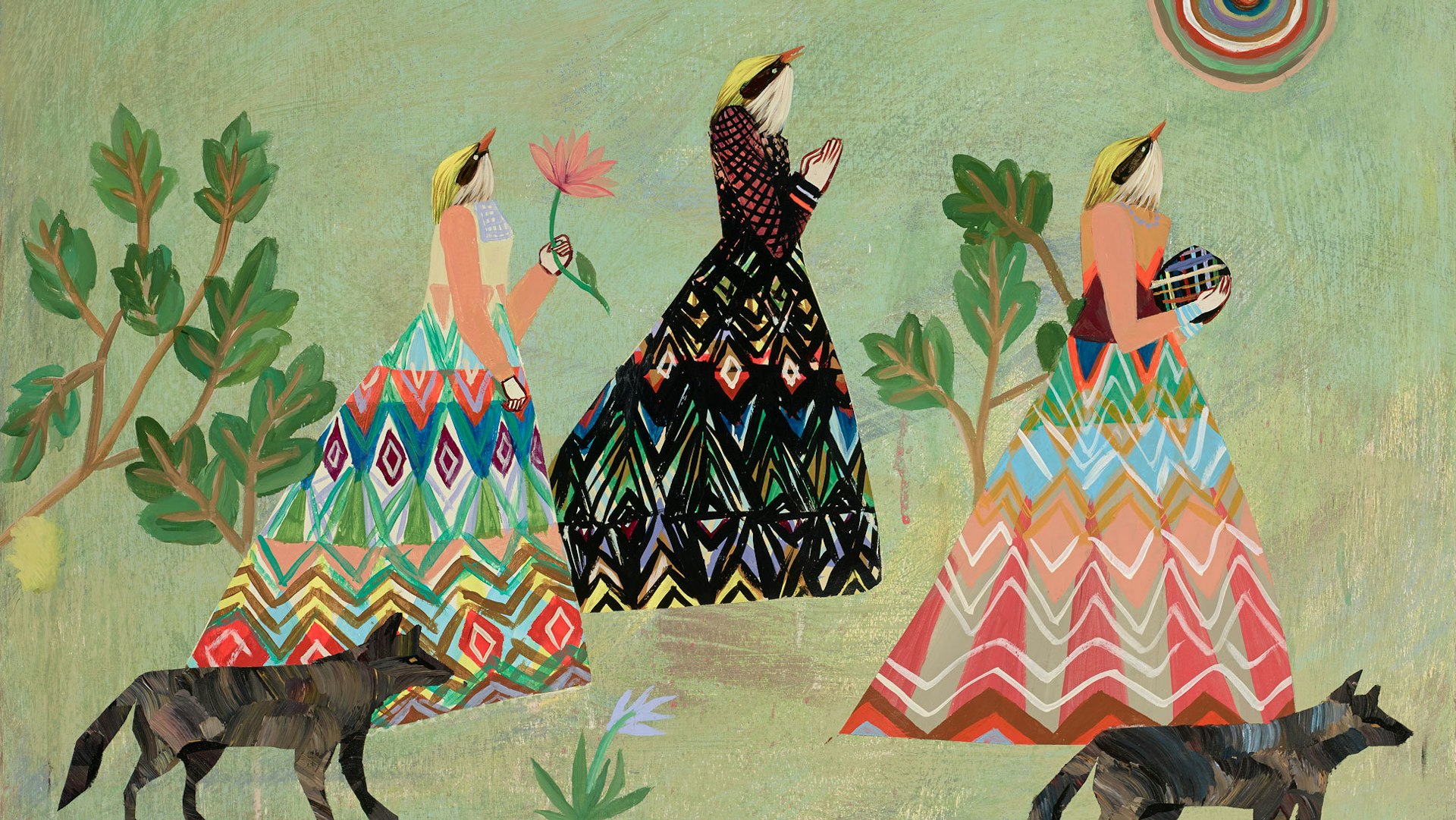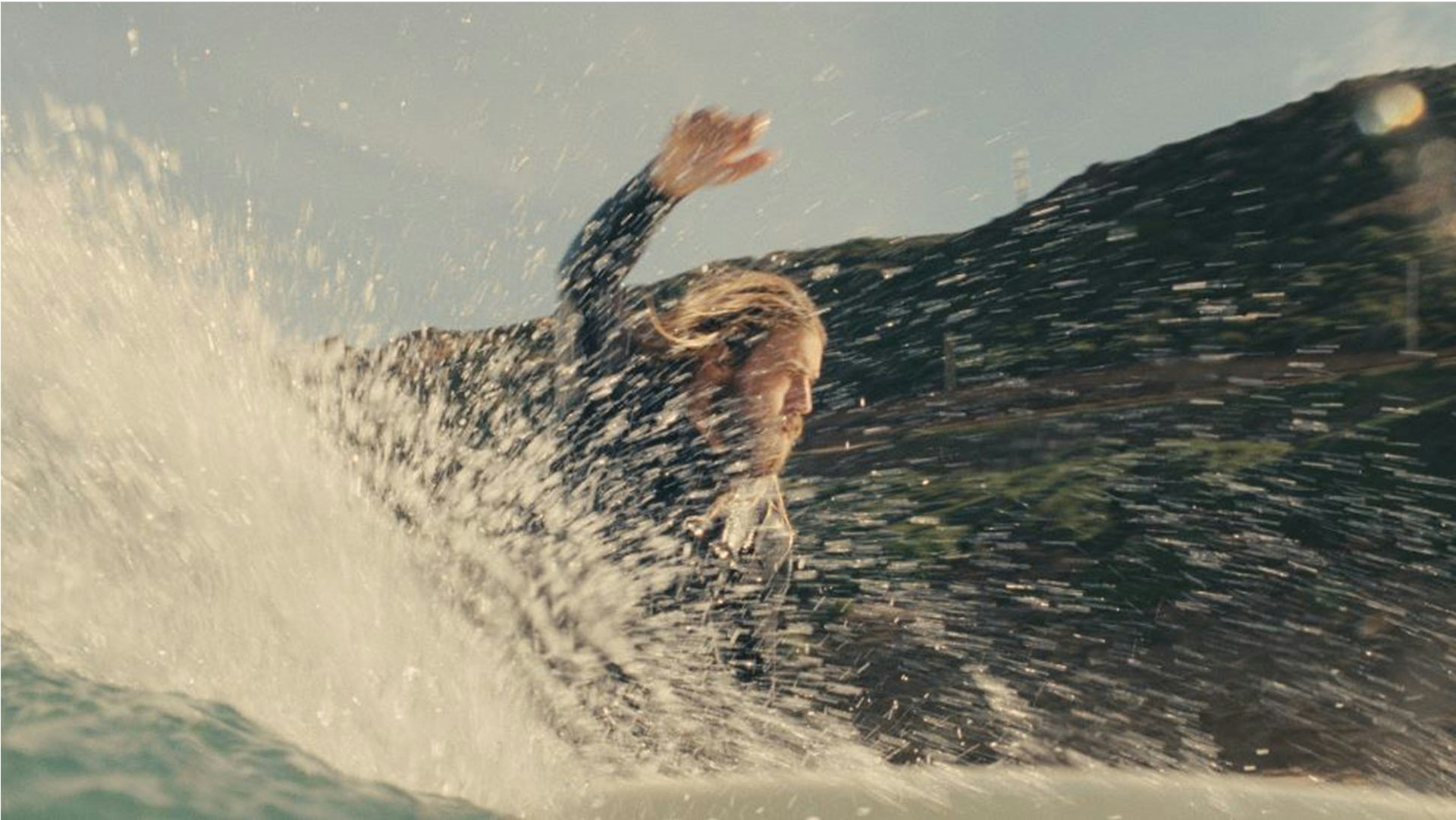
Deedee Cheriel
- Text by Shelley Jones
- Illustrations by Deedee Cheriel
She may have grown up playing in bands and running record labels in the hippie town of Eugene, Oregon, but Deedee Cheriel has called many places home over her career as a visual artist – from Honduras, Chile and England to Portugal, Spain and her native India.
She finally settled in East LA over ten years ago and has found threads of the multi-coloured city weaving their way into her artwork, which draws influences from temple imagery, punk rock, and natural and urban environments. According to Deedee, LA is a city made for creativity.
When did you move to LA and how did it compare to Oregon?
Oregon has cities and all of that but it’s very mountainous and there’s a lot of wilderness and nature, and all the cities have massive parks and hiking trails. Everything is geared towards outdoor living; hiking, biking, skiing, that sort of thing. Los Angeles is much more sunny and just typical of what you think of Southern California – sunny, surfing, a lot of people spending time by the ocean. I go hiking every day. There are a lot of parks as well in LA, so I relate to it for that reason, it was really important to me when growing up. That’s just why I love it here so much, because you can hike and swim and do all that stuff all year round.
Why did you move?
Let’s see. I was living in Oregon and I got a job on a film and I really liked the work. It was creative, and I thought I could paint while I wasn’t working on the movie, and then work on different movies. Then I sort of found that it was the job I could do that was fun and creative and that would support my painting career.
So I moved to LA to do creative side-jobs like that in the entertainment industry. There is just a lot more support for creativity here. A lot of people make money doing creative work like television, film and commercials. They are very supportive of artists and art and music and so it’s just a really good place to be an artist.
How has it changed since then?
I moved here in 1999, so I’ve lived here a chunk of time. The only thing that has really changed is that there is more traffic! It’s just such a great place to live and there is so much work here, so much creative work, that I think it attracts a lot of people. Apparently nobody leaves until there is a massive earthquake, and then everybody moves all at the same time!
Is the artist community really supportive or is it quite competitive?
You know, it just depends who you hang out with. I have people who really help me and my career. Shepard Fairey opened a gallery and showed all of his friends at his gallery, and it drew a lot of exposure and a lot of attention. He is literally the most generous and genuine person in the scene. He is just very helpful and supportive, I mean, if someone finds an event or a charity he will always be happy to donate and he’ll show up and give you time and he just an incredibly generous person.
On the other hand there are people who feel there is not enough sales or attention or galleries to go around and that can be very competitive. But in general I think there is pretty good vibes in the art scene, where people are willing to help other people out.
What are your favourite galleries?
I like going to the museums, I’ve really been enjoying MOCA (Museum Of Contemporary Art) and LACMA (Los Angeles County Museum of Art). Both of them seem to have really good exhibitions – there is a really incredible Urs Fischer show at MOCA right now. What other galleries do I really like? I like New Image Art, the Merry Karnowsky gallery where I had a show in June. There’s also a handful of galleries in Chinatown I like to go to. The scene’s pretty spread out here.
Is the amount of street art in LA a reaction to a lack of public space?
I think in general, with art, it is definitely a certain group of people that go to museums and go to art shows. And I think that’s the really amazing part of street art; it’s really popularised art again. There was a big sort of Mexican/American movement of murals, with Diego Rivera and that sort of thing, which was quite politicised and I think street art at its very best can be the same. That’s why I like Banksy, for example, he always has some sort of social criticism or witty political statement or sarcastic joke behind his pieces. And the same for Shepard Fairey, he has very political statements in his art quite often. I like the social message behind street art, but I also like that it is a popular art form and if you’re on your way to work, or driving around town, you can be a part of an art scene without really having to create the time. I think people work so hard to support their families in LA that not many people are going to get time to go to museums or art shows – so I do think street art is important, it levels the playing field and makes art public.
You have quite a diverse heritage, so do you think different communities and different cultures mix quite well in LA? Or is it kind of segregated?
That’s interesting – I do find LA to be very segregated. It’s a massive city and there’s so much to do and see. But I really find that ethnic groups all have the tendency of moving in and living near each other. And I mean that could just be a trend in every urban environment but I think that’s just how it is – you eat the same food and shop for the same things.
I love the fact that there are so many different things to see and do in LA. Like last weekend we drove up to this part of the valley that’s all Chinese, just for miles and miles and miles. Just Chinese signs, and Chinese neighbourhoods, so you can find some really amazing restaurants and they do this crazy acupressure foot massage and it’s super cheap – it’s just amazing, the stuff that you get to have in one city as a result of all this culture coming together.
Your work is very much influenced by nature and the natural landscape, but do you think LA and its urban landscape is working its way in?
Oh yeah I really like the natural environment here. I think a lot of my work at first was inspired by where I grew up [in Oregon], but I really like the sort of arid desert natural environment and the plants, like cactuses. I was asked to participate in this art show called Garden Party and we’ve been going to the Huntington Gardens and other gardens to paint the natural environment, and lately a lot of that has made its way into my work. It’s been really fun to paint and just focus on plants and the natural environment. There’s just a wealth of really interesting things here.
Does the celebrity side of things creep into your life at all?
No, I mean I try to avoid all of that whenever possible – I’m really just not super interested in any of that. I guess the only time I ever got involved with that is if celebrity people want to buy my art and stuff like that – which is nice because it’s other creative people that are interested in my work. LA is sort of a grid, a lot of people on the east side of town have a joke that they won’t leave, they won’t go past Western [Avenue], which is the street that separates the east side of LA, which is the artists’ district, the equivalent to Shoreditch or something, from the east side. The further east you go the less intense it is.
And then there’s Echo Park and Silver Lake which are really like Shoreditch, and then you sort of get into Hollywood. A lot of my friends joke that we’d never really go over to that side of town, we just avoid it whenever possible. This is such a massive city, there are always things to do, wherever you are. And it really does take quite a lot of effort to get to the other side of town, or get to the beach, or get to West LA. I mean, yeah a lot of people move to LA to be in that world, to become an actor or whatever. But the industry of film brings a lot of interesting, creative people which makes the city a much better place. I guess the good thing about it is that a lot of people use their celebrity [status] in positive ways; they help causes and stuff like that which has put LA at the forefront of activism and politics in the United States.
And that’s what I love about cities. There are all of these millions of lives happening and they don’t even have to cross sometimes. You feel like you can always discover so much, and it’s always changing, it’s always renewing itself, which I find really interesting.
In terms of your art, is there anything you feel you’d like to do that you haven’t done yet? Any mediums you’d like to work in? What excites you about making art at the moment?
I am in the process of building a video, so there is a lot of things I feel like I’d be able to do that I haven’t really gotten to do yet. One of the things I’d like to do more of is paint on ceramics, so I’m hoping to have a show in the future where I’ll get to do that. I’d just love to paint on ceramics again, but we’ll see.
You always support other female artists. What are the opportunities for a female artist in LA like? Do you think it’s a progressive city for that sort of thing?
Yeah definitely, I think now is a really great time for women in art too, just because there’s this underground movement in street art happening that makes it more accessible for all sorts of different people; whether it’s women or men, or people who have gone to art school or haven’t gone to art school. It’s definitely a really great time and great place to be involved in art. There’s a young artist in LA named Jesse Spears who I really like, she doesn’t show a lot in galleries but her work is really fantastic and really sort of emblematic of a lot of LA street life, which is really interesting. She was in a group show of women artists called SUBject/subJECT that I put together in Shepard’s gallery Subliminal Projects. Another artist I really like is Mel Kadel, her art is really illustrative, she combines a lot of patterns and it’s very women-oriented and uplifting and sort of has a positive message in each piece. There’s also another artist in LA that I really like named Kime Buzzelli, and her work has an East LA fashion vibe to it.
